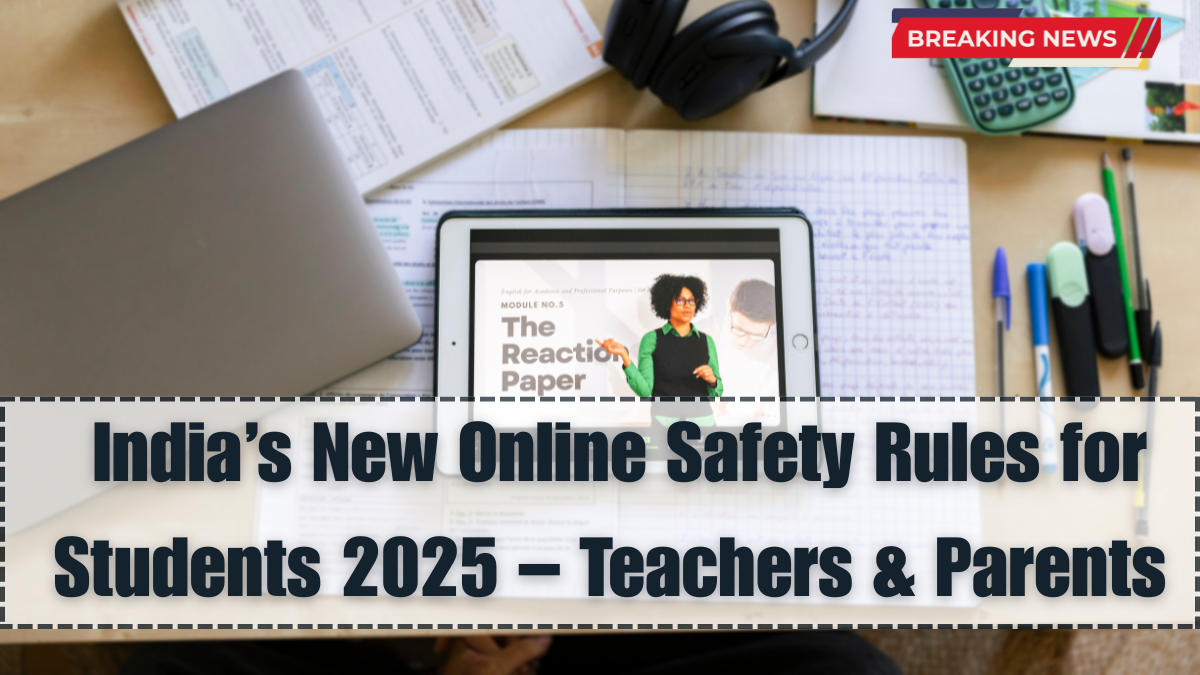India has officially rolled out the Online Safety Rules 2025 to address increasing concerns over digital exposure and cyber threats faced by students. These new guidelines apply to all CBSE-affiliated schools and emphasize responsible student internet use, classroom device regulations, and the role of parental monitoring.
Introduced as part of the CBSE 2025 reforms, these rules are now being strictly followed in both public and private schools. The aim is to ensure that children stay protected from online risks while continuing to benefit from digital education tools. The Online Safety Rules 2025 are being monitored through regular audits, workshops, and compliance checklists.

Key Features of the Online Safety Rules 2025
The updated Online Safety Rules 2025 introduce a multi-layered safety framework for students, schools, and parents:
-
Mandatory internet filtering software in school labs and libraries
-
Banning use of personal mobile phones during school hours
-
Teacher-supervised digital activities only
-
Parental consent required for any online class participation
-
No social media accounts for students below 13
-
Reporting mechanism for any online abuse or suspicious activity
These rules are already being integrated into digital learning platforms under the CBSE digital rules initiative.
School Responsibilities Under Online Safety Guidelines
As per CBSE 2025 policies, schools must now follow strict digital protocols. Responsibilities include:
-
Appointing a Digital Safety Officer
-
Setting up safe Wi-Fi zones with access logs
-
Holding monthly online safety awareness sessions
-
Installing firewall and anti-malware tools on school systems
-
Banning third-party apps and unauthorized games on school devices
All activities involving student internet use must now be monitored with written logs and reports.
Role of Parents in Enforcing Safety at Home
The Online Safety Rules 2025 also include a detailed role for parents in ensuring safe screen time and behavior:
-
Regularly check browsing history and device activity
-
Use parental control software like Google Family Link or Safe Search
-
Educate children about cyberbullying and fake content
-
Set daily screen time limits for smartphones and laptops
-
Attend school-organized parental monitoring workshops
These measures help create a consistent and safe digital experience across school and home environments.
Internet Safety Checklist for Students
CBSE has issued a standard checklist to promote internet safety among students. Here’s a quick summary:
| Safety Tip | Action Required |
|---|---|
| Never share passwords | Always keep credentials private |
| Report cyberbullying | Inform parents/teachers immediately |
| Avoid unknown links or messages | Do not click on suspicious popups |
| Log out after every session | Especially on shared devices |
| Do not post personal info | Maintain privacy on digital platforms |
Schools are already circulating this checklist in student handbooks as part of the CBSE digital rules.
FAQs
What are the Online Safety Rules 2025?
Online Safety Rules 2025 are official digital safety guidelines issued to ensure responsible and secure internet use by school students.
Who enforces these rules?
Both schools and parents are jointly responsible for enforcing student internet use guidelines under the CBSE digital safety program.
Can students use mobile phones in school?
No, mobile phone usage is banned for students during school hours as per the Online Safety Rules 2025.
Are there any tools to help parents monitor usage?
Yes, parents are encouraged to use control apps and filtering tools to ensure safe browsing at home under parental monitoring protocols.
Is this policy applicable to all schools?
Yes, all CBSE-affiliated institutions must implement these CBSE 2025 safety rules immediately.
Click here to know more.
